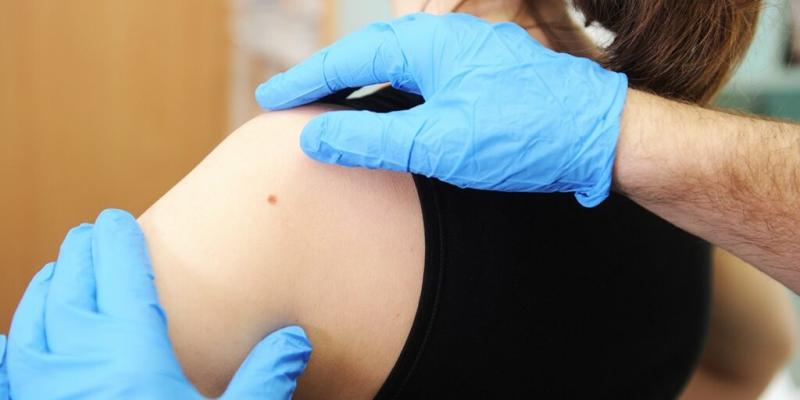Dysplastic Nevus Removal: A Vital Step In Early Skin Cancer Prevention

Skin health is a crucial aspect of overall wellness, and one
of the most important ways to safeguard it is through vigilant monitoring and
timely intervention. Among the various skin conditions that can signal
potential health risks, dysplastic nevi (atypical moles) stand out as a
significant concern. These unusual moles, although not cancerous initially, can
sometimes be precursors to melanoma, the deadliest form of skin cancer. Dysplastic
nevus removal is a vital step in early skin cancer prevention, helping to
reduce the risk of melanoma and promote better long-term skin health.
What Is A Dysplastic Nevus?
A dysplastic nevus is a type of mole that looks different
from a regular mole. It may be larger, have irregular borders, and feature a
variety of colors. Dysplastic nevi can occur anywhere on the body and are often
more common in individuals with fair skin, those with a family history of skin
cancer, or those who have had frequent sun exposure. While most dysplastic nevi
are benign, some may develop into melanoma over time, making early detection
and removal an essential strategy for skin cancer prevention. Regular skin exams, such as those offered at https://www.dermatologist-nyc.com/skin-cancer-screening/,
are essential for early detection of dysplastic nevi and other potential signs
of skin cancer.
The Risks Of Dysplastic Nevi
The primary concern with dysplastic nevi is their potential
to develop into melanoma, a form of skin cancer that can spread rapidly and be
life-threatening if left untreated. Studies show that individuals with more
than five dysplastic nevi have an increased risk of melanoma compared to those
without these moles. Furthermore, the appearance of dysplastic nevi often
indicates an abnormal pattern of skin cell growth, which can be a red flag for
melanoma or other skin cancers.
Melanoma often appears as an irregularly shaped,
multicolored mole, with a tendency to grow over time. By removing dysplastic
nevi before they undergo these changes, patients can effectively reduce their
risk of developing melanoma or other forms of skin cancer. This makes the
removal of dysplastic nevi a proactive, preventive measure.
Early Detection And Prevention
Skin cancer, including melanoma, is highly treatable when
detected early. One of the most important aspects of early detection is regular
skin exams performed by a dermatologist. During these exams, a dermatologist
can spot any changes in existing moles or the appearance of new ones,
identifying potential dysplastic nevi. If a dysplastic nevus is found, the
dermatologist may recommend its removal to prevent it from transforming into
melanoma.
Dysplastic nevus removal is typically performed as a simple
outpatient procedure. The mole is excised along with a small margin of
surrounding tissue to ensure that any potentially abnormal cells are fully
removed. The procedure is usually quick and minimally invasive, and it is often
performed under local anesthesia to minimize discomfort. After removal, the
tissue is sent for biopsy, where a pathologist examines it to confirm whether
it contains any cancerous cells.
Benefits Of Dysplastic Nevus Removal
The most significant benefit of removing dysplastic nevi is
the prevention of melanoma. By addressing abnormal moles early, individuals can
significantly lower their chances of developing skin cancer. Regular removal of
these moles helps to eliminate the risk of them transforming into malignant
growths, thus offering peace of mind and enhancing overall skin health.
In addition to reducing the risk of skin cancer, removing
dysplastic nevi also contributes to improved skin appearance. Some individuals
may find that their atypical moles are unsightly or cause emotional distress,
especially when located on visible areas like the face or arms. Having these
moles removed can restore confidence and enhance self-esteem.
Post-Removal Care And Follow-Up
Following the removal of dysplastic nevi, it is important to
follow post-operative care instructions to ensure proper healing and reduce the
risk of infection. This typically involves keeping the wound clean, applying
ointment as directed, and avoiding direct sun exposure while the area heals.
In some cases, a follow-up appointment with the
dermatologist may be necessary to monitor the healing process and check for any
signs of complications. Since dysplastic nevi are often associated with an
increased risk of melanoma, it is essential to continue regular skin exams and
to be vigilant about monitoring any new changes in the skin.
Conclusion
Dysplastic nevus removal is a simple but crucial step in the
prevention of melanoma and other forms of skin cancer. By detecting and
removing these abnormal moles early, individuals can significantly reduce their
risk of developing skin cancer and improve their overall skin health. Regular
dermatological check-ups, along with proactive mole removal when necessary,
provide the best strategy for long-term skin protection. If you notice any
moles that seem unusual or have changes in shape, size, or color, it is
important to consult a dermatologist as soon as possible. Remember, early
intervention can save lives and ensure a healthier, cancer-free future.







Comments